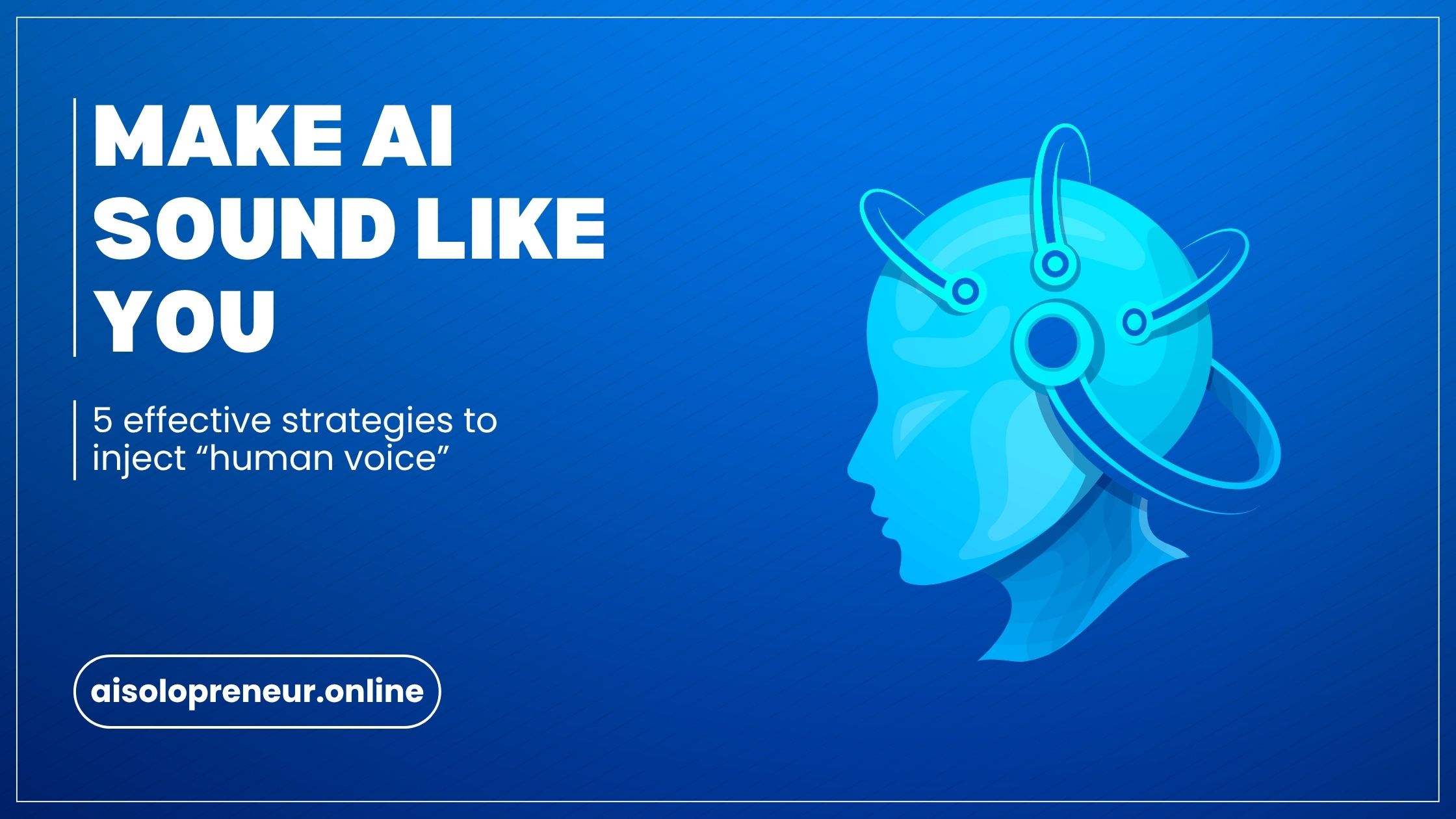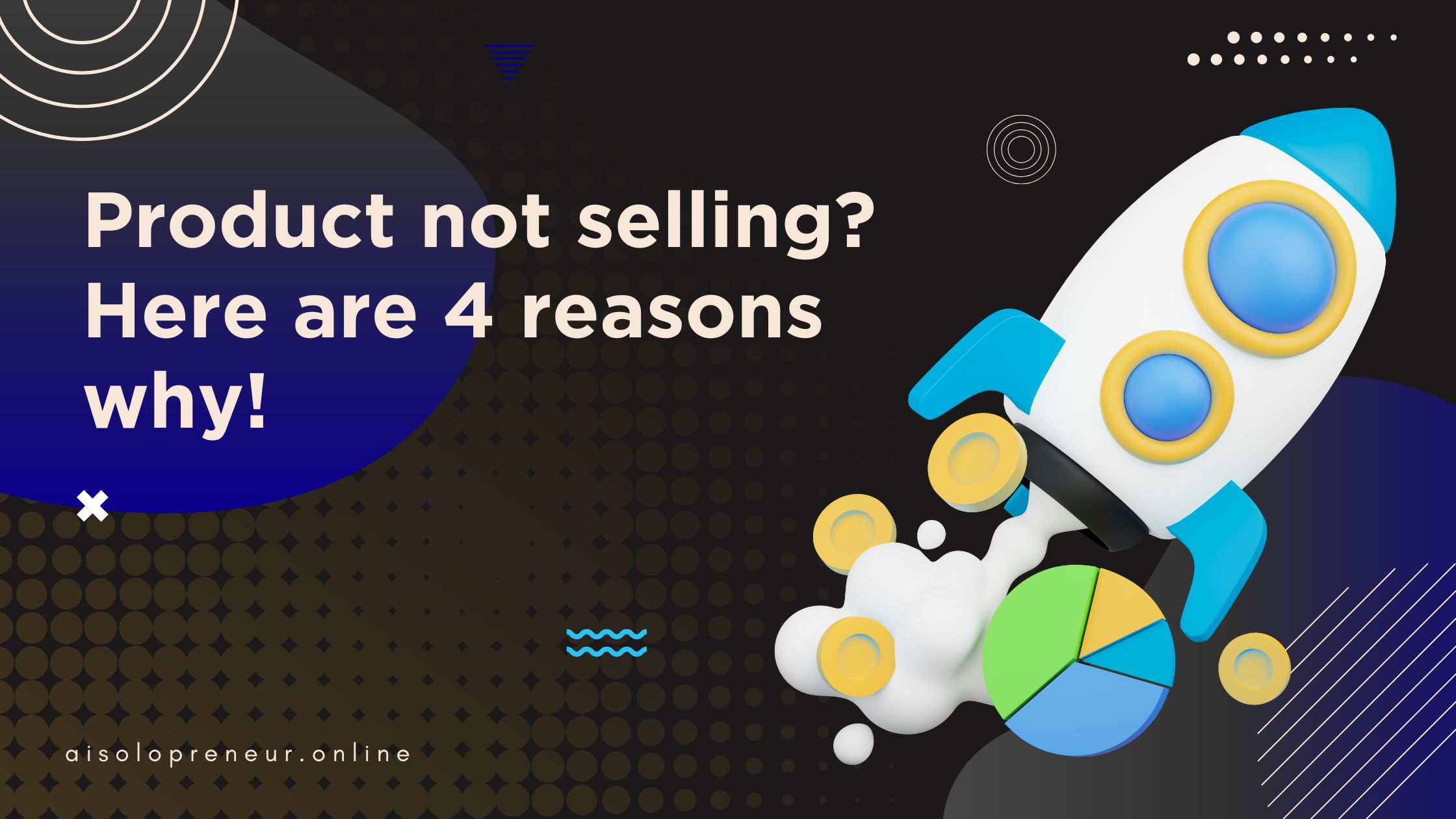You did it. You used AI to write a blog post in minutes. But when you read it back, something feels… off.
It’s well-written, it’s grammatically perfect, but it has no soul. It’s filled with safe, generic phrases like “in today’s digital landscape” or “it’s crucial to.” It sounds exactly like a thousand other AI-written articles out there. It has the “AI Echo.”
This is a huge problem. People don’t connect with robots. They don’t trust generic content, and they certainly don’t build a loyal audience around it. If your content sounds like everyone else’s, you have no competitive advantage.
The good news is, you’re 80% of the way there. The AI has done the heavy lifting of research and structure. Now, you just need a system for the final 20%—the human touch.
In this post, I’m going to give you 5 simple techniques to inject your unique voice into AI-generated content and make it truly your own.
1. The “Story Injection” Method
An AI can’t tell your story. It can’t share a personal experience, a time it failed, or a lesson it learned the hard way. This is your single greatest advantage. Stories are the fastest way to build a human connection.
The Technique: Find a key point in the AI’s draft. Ask yourself, “What’s a short, personal story or anecdote I can tell that illustrates this point?”
Let’s say your AI wrote a generic paragraph about the importance of consistency. It might sound like this:
AI Version: “Consistency is a critical component for achieving long-term goals. By maintaining a regular schedule and applying steady effort, individuals can make significant progress over time.”
That’s boring. It’s true, but it’s boring. Now, let’s inject a human story.
Your Version: “I used to be the worst at consistency. I remember one Tuesday I had three different project ideas, and I was excited about all of them. By Friday, I’d abandoned them all for something new. The real shift for me happened when I stopped trying to be perfect and just focused on showing up for 15 minutes a day. That’s it. That small, imperfect action was more powerful than three days of ‘perfect’ planning.”
See the difference? One is a textbook definition. The other is a relatable human experience.
2. The “Voice & Vocabulary” Swap
Your AI has a default vocabulary. It uses words like “utilize,” “leverage,” and “it is imperative.” Do you talk like that? Probably not. Your unique voice comes from your specific word choices, your rhythm, and the phrases you use naturally.
The Technique: Read the AI’s draft out loud. If a sentence feels awkward to say, it will feel awkward to read. As you read, highlight 5-10 words or phrases that don’t sound like you and swap them out for your own.
| AI Says… | You Say… |
|---|---|
| Utilize | Use |
| It is imperative that… | You need to… |
| In order to achieve… | To get… |
| A multitude of factors | A lot of things |
| Consequently | So |
This isn’t about “dumbing it down.” It’s about making it sound real. Swapping just a few key words can instantly make the entire piece feel more authentic.
3. The “Contrarian Opinion” Insert
An AI is designed to provide a safe, balanced consensus. It avoids taking a strong, controversial stance. This is a huge opportunity for you to stand out. A unique opinion is the hallmark of a human expert, not a machine.
The Technique: Find a “safe” statement in the AI draft and challenge it. Ask yourself, “What’s my unique take on this? Do I disagree with the common wisdom here?”
For example, the AI might write something like:
AI Version: “To succeed in business, it’s important to have a detailed, 5-year business plan that outlines all your goals and strategies.”
That’s standard advice. But you can insert your human expertise.
Your Version: “You’ll hear a lot of gurus tell you that you need a detailed, 5-year business plan. Frankly, for a solopreneur, I think that’s a waste of time. The market changes too fast. Here’s why a simple 1-page plan that you review every 90 days is far more effective…”
That contrarian take is interesting. It builds authority and makes the reader lean in.
4. The “Simplify and Clarify” Pass
Sometimes, in its effort to be thorough, an AI can over-explain a simple concept until it sounds like a dense paragraph from a textbook. Your job as the human editor is to be the master of simplicity.
The Technique: Scan your article for the most dense, complicated-sounding paragraph. Now, challenge yourself to explain that same idea in a single, simple sentence, as if you were talking to a friend over coffee.
AI Version: “The implementation of a modular content system allows for the synergistic repurposing of core assets across multiple platforms, thereby maximizing distributional reach and engagement potential.”
Your Version: “Don’t create from scratch for every platform. Write one great blog post, then break it into pieces for Twitter, LinkedIn, and your newsletter.”
True intelligence isn’t using big words; it’s making the complex simple.
5. The “Specific Example” Enhancement
AI often speaks in generalities. It will say things like, “It’s important to use good tools,” or “Many successful entrepreneurs do this.” This kind of vague advice isn’t very helpful. Humans build trust by providing specific, concrete examples.
The Technique: Find any general statement in the draft and replace it with a specific, named example.
- Instead of “good tools,” say “a tool like Notion or Carrd.”
- Instead of “a successful entrepreneur,” say “someone like James Clear, author of Atomic Habits.”
- Instead of “a popular social media platform,” say “TikTok.”
Specificity feels more credible, more helpful, and proves you actually know what you’re talking about.
Conclusion: You Are the Final 20%
Let’s recap. To humanize your AI content, you can:
- Inject a personal story.
- Swap the vocabulary to match your voice.
- Insert a unique or contrarian opinion.
- Simplify a complex idea.
- Enhance with specific examples.
AI is your most powerful employee, but you are the CEO. Its job is to do the first 80% of the work—the research, the structure, the first draft. Your job is to provide the final, irreplaceable 20%—the wisdom, the story, and the soul.
Learning how to do this is the core of a modern, AI-powered workflow. If you’re ready to learn the complete system for building an entire business with this method, check out the AI-Powered Solopreneur 30-Day Challenge. I’ll show you how to apply this thinking to everything from your products to your marketing.



